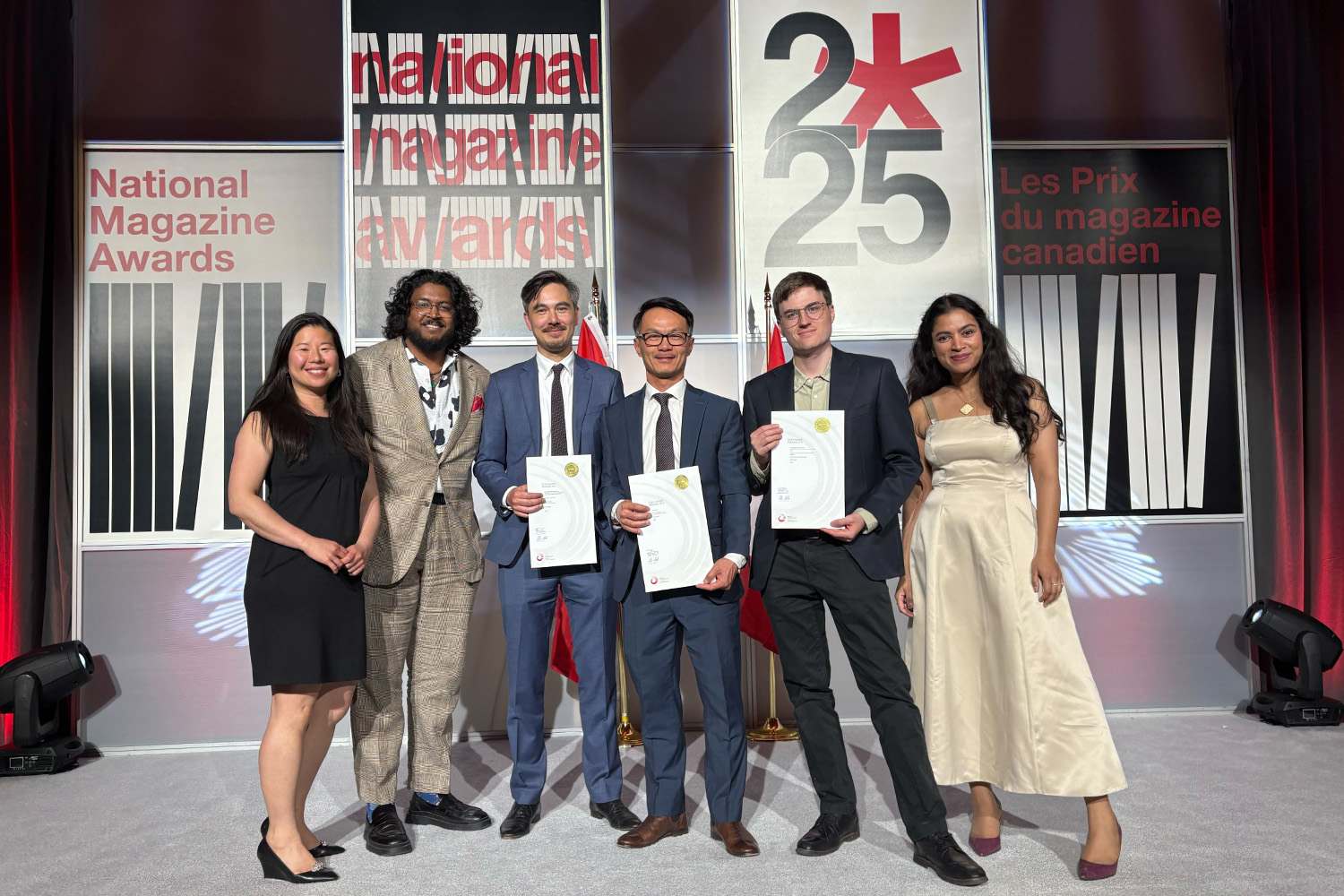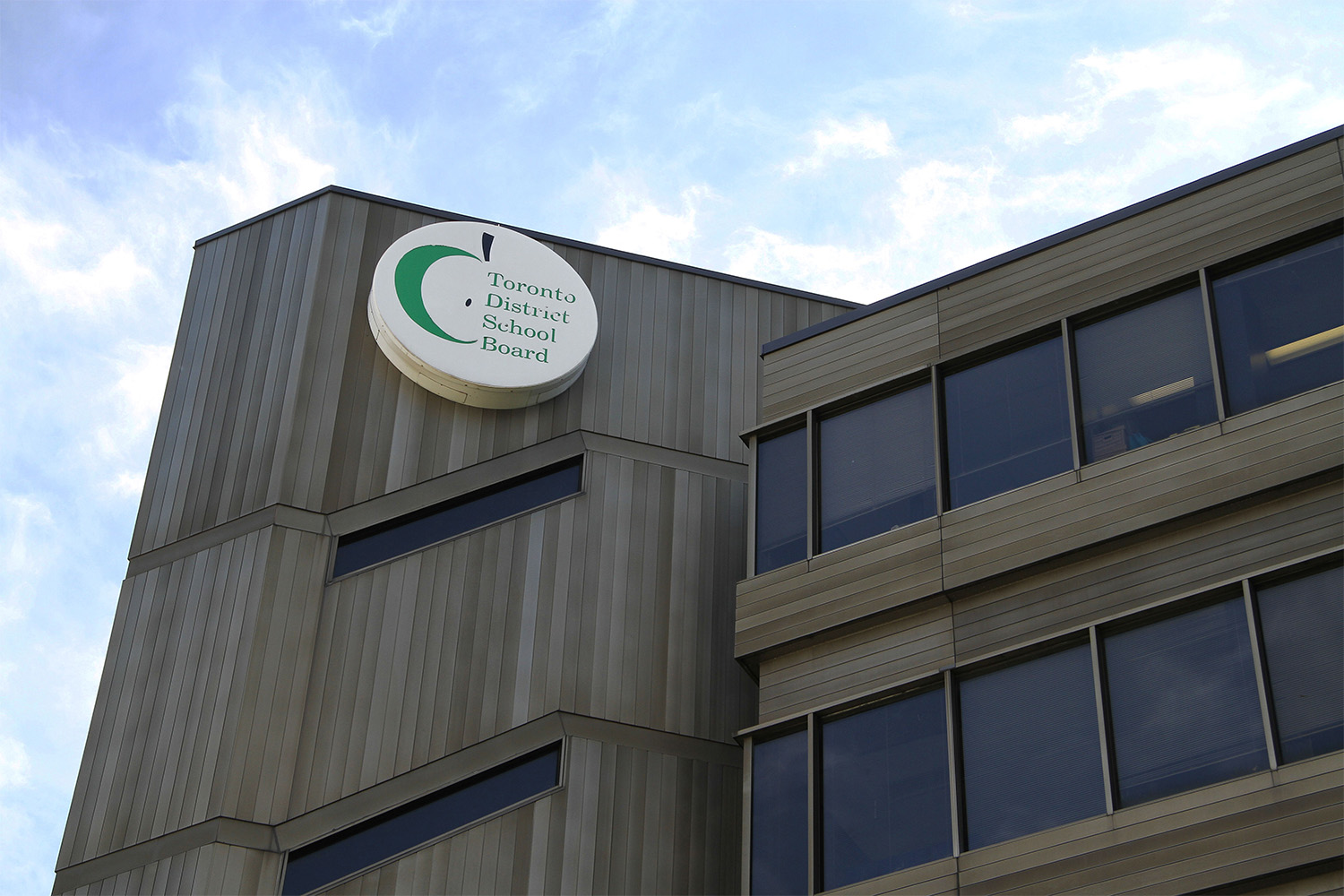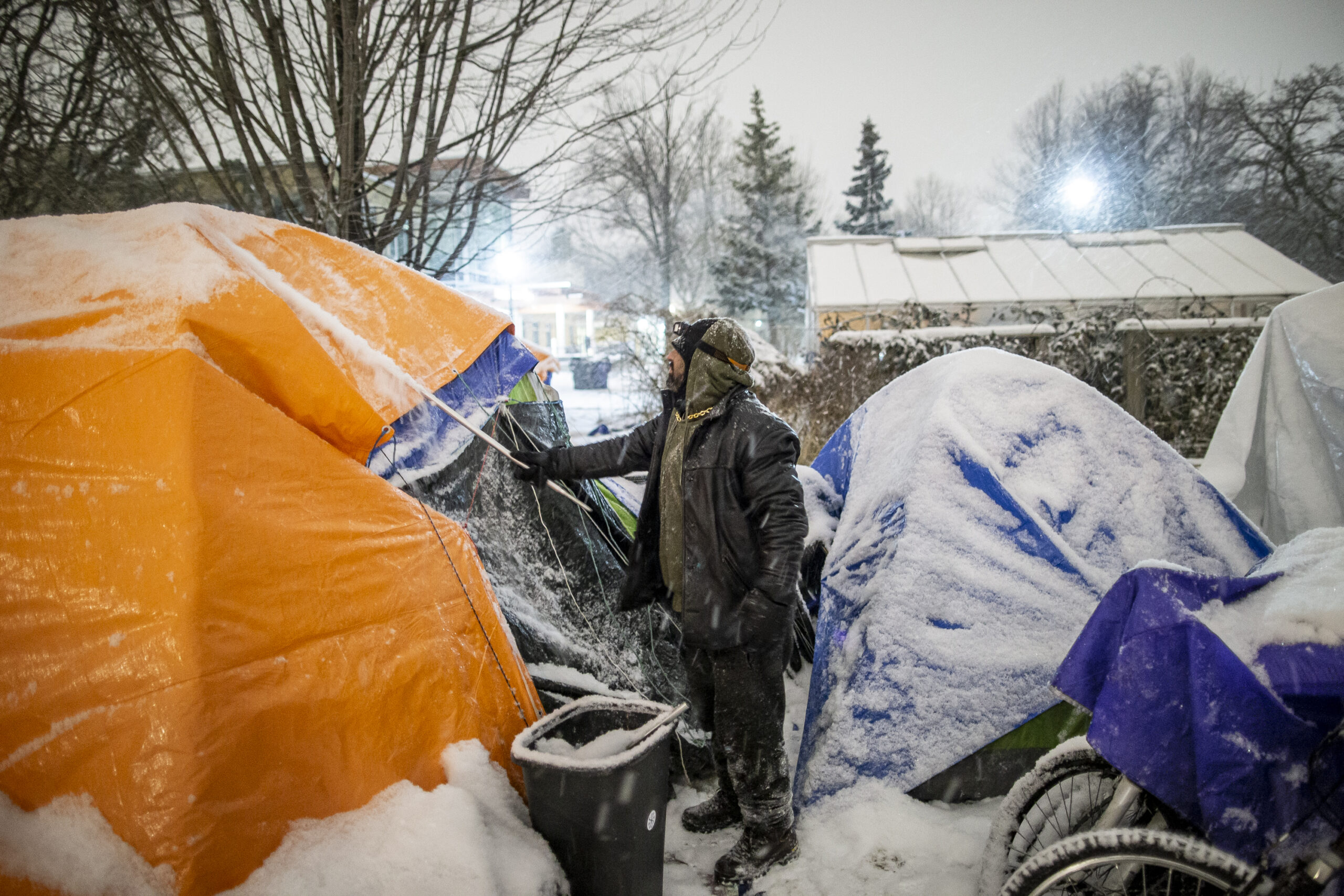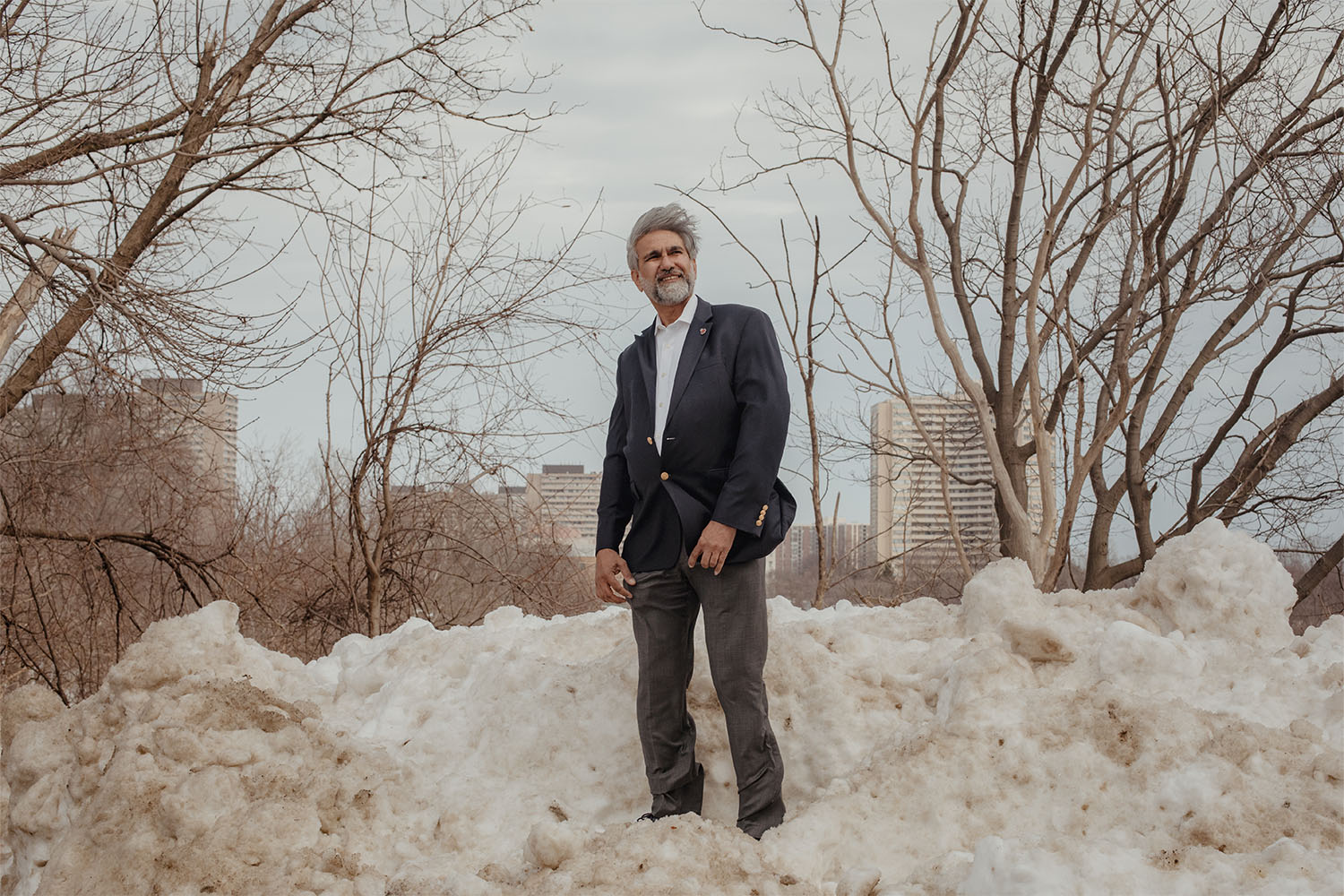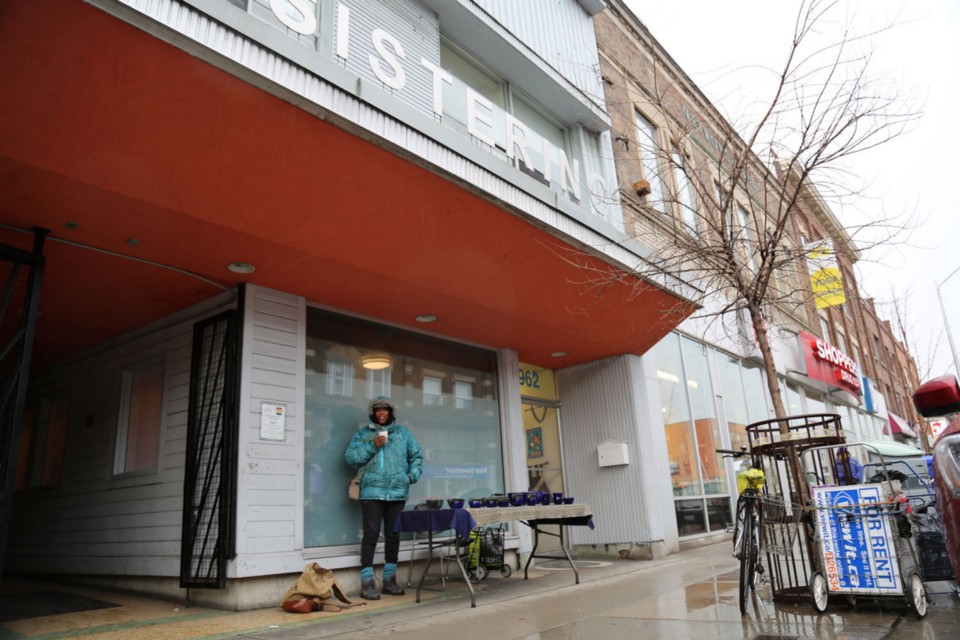
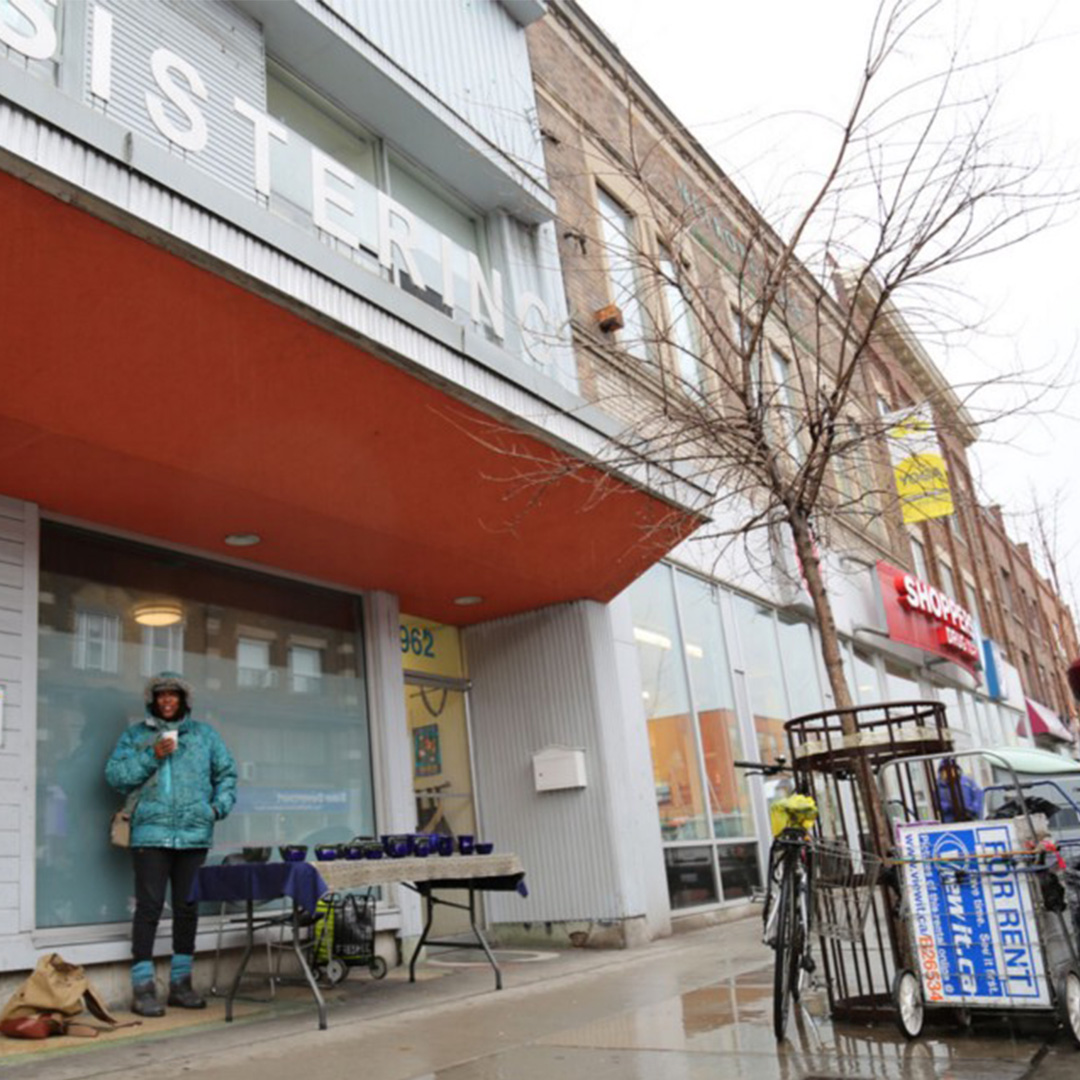
There is a door to Carol Danis and Lindsay Windhager’s office, but there isn’t much point to closing it.
The space is a hub of activity. In the span of a half hour women walk in and out asking about stashes of used clothing, returning survey forms, or reminding the pair about the free turkey vouchers planned for the holiday season.
Although closing the door might stem the deluge, it would be contrary to the low-barrier approach that is at the core of all the work being done at Sistering: A Women’s Place, an organization that brings harm reduction and needs-based solutions to vulnerable women from across the city.

“We try to decrease stigma and judgement,” says Danis, “So we’re open all the time.”The space provides emergency shelter, healthcare, laundry and hygiene facilities and they teach employment skills, tenant rights and healthy living skills.
Windhager is a community support worker. Danis is the coordinator of the peer harm reduction program. Unofficially, they straddle a variety of roles — from onsite programming to navigating housing systems — in their work with the participants in the harm reduction program, one of the shelter’s most vulnerable populations.
Working the Harm Reduction Program
The women Windhager and Danis work with have a complex set of needs. They use drugs and alcohol. They’re sex workers. Many are homeless or street involved. Often these high-risk behaviours are combined with co-occurring mental illnesses and experiences with past and present trauma.
Sistering’s harm reduction program began in 2008, 27 years after the drop-in opened in its original location at Bathurst and Dundas. Now the operation is located on Bloor Street, just west of Ossington Avenue.
But the women in harm reduction need more than a space to sleep and the tools to use drugs safely. In Windhager’s experience those solutions only scratch the surface for this high-needs group. They need a sense of community, employment, advice on how to defend their rights as tenants. They need advice about how to access healthcare, companionship attending appointments, and a community of support.
Each woman’s specific needs, and their urgency, can only be unpacked by “meeting them where they are,” according to Danis.
Members of the harm reduction program tell Windhager and Danis what they need and then they “build supports around that,” says Windhager.
“[The women] might be seeking support on how to use safely, or a situation has come up and they’ve had a bad day, they may have experienced sexual violence or they’re looking for some sort of connection,” says Windhager, not beginning to cover all the possible reasons that bring women to her office.
In some instances their health needs are as simple as the clean needles and condoms provided in harm reduction kits. But more often they include un-diagnosed or un-managed mental illness, experiences with trauma, and a host of medical issues that stem from years without care — ranging from stolen dentures that need replacing to untreated Hep C.

The Sistering Approach
The number of women accessing Sistering’s services has grown over the past year. Many of the women are regulars and some live in the area, though Windhager says the space draws women from across the city. In part, this is because Sistering is one of the few 24/7 women-only drop-in spaces in the city. It is also remarkably low-barrier.
Members of street-involved populations are used to being transient; they travel to where the resources are. Sistering is located in the Dovercourt-Wallace Emerson-Junction neighbourhood of Toronto. This is in the Mid-West Sub-Region of the Toronto Central LHIN, which has the largest number of homeless shelters in the city. These spaces draw the population to the area, but not on a permanent basis; something that neighbourhood profile data can’t account for.
<iframe src=”https://www.google.com/maps/embed?pb=!1m14!1m8!1m3!1d5772.690308219592!2d-79.430362!3d43.661791!3m2!1i1024!2i768!4f13.1!3m3!1m2!1s0x0%3A0xee706a1298f6e8de!2sSistering!5e0!3m2!1sen!2sus!4v1557333704216!5m2!1sen!2sus” width=”600″ height=”450″ frameborder=”0″ style=”border:0″ allowfullscreen></iframe>
Gathering accurate data on street-involvement and high-risk behaviour is difficult; traditional measurement approaches have difficulty reaching these populations. But according to the 2013 Street Needs Assessment, the number of street-involved women in the city grew by 7% between 2006 and 2013, which is considered a significant increase.
Street-involved women are at a high degree of risk. Many do not feel safe in co-ed shelters, even when there is space for them.
Since Sistering’s drop-in became 24/7 in 2015, upwards 50 women use the space nightly. On an average day Danis says she sees 20 women from the harm reduction program alone.
“They can come here on drugs or off drugs and we’re not going to judge them,” adds Danis.
Danis and Windhager are firm believers in the harm reduction tenet that says “meet them where they are.” They welcome women in all states to the space. And because it’s a drop-in, women can use the space with few, if any, conditions on what they do or how long they stay.
“The women here were pretty demanding about access to emergency shelter and evening and overnight spaces, especially because there are so many barriers to accessing those spaces in traditional settings,” says Windhager. “The women we have coming are often asked to leave shelter spaces or housing, they’re used to restricted access.”
Without low-barrier options, these women stay on the streets and without support their patterns of behaviour are unlikely to change — leaving them at high risk for infectious diseases and mental health crises. They are more likely to need or use emergency services. And, tragically, they have a much higher death rate than the average Torontonian.
Women-only, 24/7 drop-in space is limited in the city, but in high demand. Beginning in 2013, the City of Toronto opened a consultation process on the feasibility of developing a 24-hour drop-in service for women. A corresponding 2014 report states that there was a clear need for such a space in the city, “a drop-in that is open during the most dangerous times for street-involved women, when other services are closed.”
The report also indicated that such a drop-in would have to “incorporate low-barrier, harm reduction, trauma-informed care” to meet the population’s needs.

Hiring People Who Understand
The approach at Sistering exceeds those recommendations. During the day, women can access the drop-in space on the first floor or walk up to the third floor where offices for support workers, including Windhager and Danis, is down a short hallway. At night and on weekends, the drop-in remains open to all who need it.
There are laundry machines and showers on site. In the front room of the drop-in there are recliners for women to nap, relax or spend the night. Hanging from the railing in the stairwell are bags that contain harm reduction kits, prepared each week by Danis’ harm reduction peer workers.
The peers are members of the Sistering community and have experiences with sex work, substance use or street-involvement. Many have experienced a combination. There is no prerequisite to be clean, sober or housed to work for the program.
“It’s about lived experience,” says Danis, “Living in the community and being able to connect to others — you don’t really need any education. They’re experts in their own life and how they stay safe.”
Danis says she “can hire about five peers at about ten hours a week for $15 an hour,” which is a significant sum.
“It can make the difference between starving on [the Ontario Disability Support Program] and buying yourself some groceries,” she says. “It can also help them move further — I started out as a peer ten years ago and now I’m working full time.”
She also has the funds to hire “a few more women” at 3–5 hours a week to do outreach work in the community distributing harm reduction kits or to help with odd tasks around the drop-in. She says these spots are for women who might not “be in a place” to commit to regular work hours. The funding for the program runs on a three-year cycle; Danis will be reapplying for funding this year.

Dana Dack is one of Sistering’s peer harm reduction workers. When she started working as a peer at Sistering five years ago she was an active crack cocaine user with a “$300 or $400 a day habit.”
Now off drugs, she credits the environment at Sistering for a great deal of her recovery. She runs both harm reduction kit making sessions each week, as well as other programming.“It’s the support from the women in the program that makes it work — the love and support, because we’re like a family. And it doesn’t matter how long or short you’ve been here, we all know we’re coming from the same place,” says Dack.
Danis says she only wishes she could employ more peers; the positions are in increasingly high demand. “Their work is becoming more recognized,” she says. “The community partners certainly value them.”




Spaces for Health and Healing
Since connecting with Sistering, Dack has not only stopped using drugs, but has been able to find more stable living arrangements and learn about managing her diagnosed depression, post-traumatic stress disorder and anxiety. She has met regularly with a physician and a psychiatrist — an unfathomable idea during her 10-year addiction.
“I didn’t get out of bed unless it was to smoke crack,” she says.
According to the CAMH website, the complexity of Dack’s experiences is not unusual. At least 20% of people with a mental illness also have a substance use problem. For individuals who are street-involved the likelihood of having both is compounded.
“There’s a lot of negative and horrible things in this world and to have one good thing where you can come and not feel scared and not feel alone and have women who are like-minded, it’s good to have,” says Dack.
Dack accesses her doctor and psychiatrist at Sistering. The organization coordinates with Inner City Health Associates to provide onsite care and gets the materials for harm reduction kits from The Works. They offer anonymous HIV testing on site, as well as Naloxone training. Starting in January 2017, they also plan to pilot a Hep C treatment program out of the space and provide the means to access it.
“They’re going to be able to come here for like a six month period, have lunch, get two [TTC] tokens and clear their Hep C,” says Danis.
Providing health services on site is essential, according to Windhager. “People already feel a sense of trust and comfort in this setting, and for many that will increase the likelihood that they want to access that service because they are here anyway,” she says.
On Tuesday and Thursday the physicians offer drop-in appointments. It’s a popular option among the women in harm reduction, who Windhager says might be less able to keep to appointment times compared to other women who access Sistering.
Accessing health care is not always this straightforward. In the six months prior to the 2013 Street Needs Assessment of Toronto’s homeless population, 46% of respondents used emergency department services and 26% used ambulance services. According to Danis it can be “too much” for women who are street-involved or use substances to keep to appointments or find primary care.
According to Dack, accessing care can also be embarrassing. “For the ten years that I was using I didn’t have a family doctor, I didn’t have any of that, because I didn’t want to feel the stigma, you know what I mean?” she says.
For the ten years that I was using I didn’t have a family doctor, I didn’t have any of that, because I didn’t want to feel the stigma, you know what I mean? The thing is that we’re already beating ourselves up enough and the shame part is that you don’t want people to see you that way either. The fact is, nice people take drugs.
— Dana Dack
Dack adds, “The thing is that we’re already beating ourselves up enough and the shame part is that you don’t want people to see you that way either.”
Shelter space can be equally barrier-laden — and not only because there isn’t enough space to go around. “In other places it’s almost like a walk of shame, but here [at Sistering] it’s low barrier,” says Dack.
Windhager says community health centres, detoxes, shelters and the emergency department can have restrictions that create barriers to access, for example by requiring abstinence from drugs and alcohol. Danis says even something as simple as restrictions on smoking cigarettes or a no “in-and-out” policy can effectively keep women away.
Stigma and shame are often more damaging. “Sometimes experiences trying to access services can be re-traumatizing for women,” says Windhager. Often, she says, that means they won’t try to access the service again.
Negative experiences, lack of primary care and shame are only part of the reason that that women who use substances and are street-involved access emergency services at high rates, but Windhager says she almost worries more about the women who feel too stigmatized or uncomfortable to access services at all.
“That’s the population that is very much in need of low-barrier medical services,” she adds.
Part of meeting the community members where they are means understanding that their willingness to access supports may change from day to day. For the women in the harm reduction program, housing, health and employment are closely interconnected; resolving one challenge often requires support in all of them.
For Danis and Windhager, their fundamental role is to listen.
“We’re not telling them what they need. We’re not telling them you’ve got to live here or you’ve got to get sober,” says Danis. That approach, says adds, simply doesn’t work.
Instead, Windhager says, it’s about empowering women with the tools to achieve goals they set for themselves. “We let them choose,” she says. “And then we do everything we can to help them succeed.”

